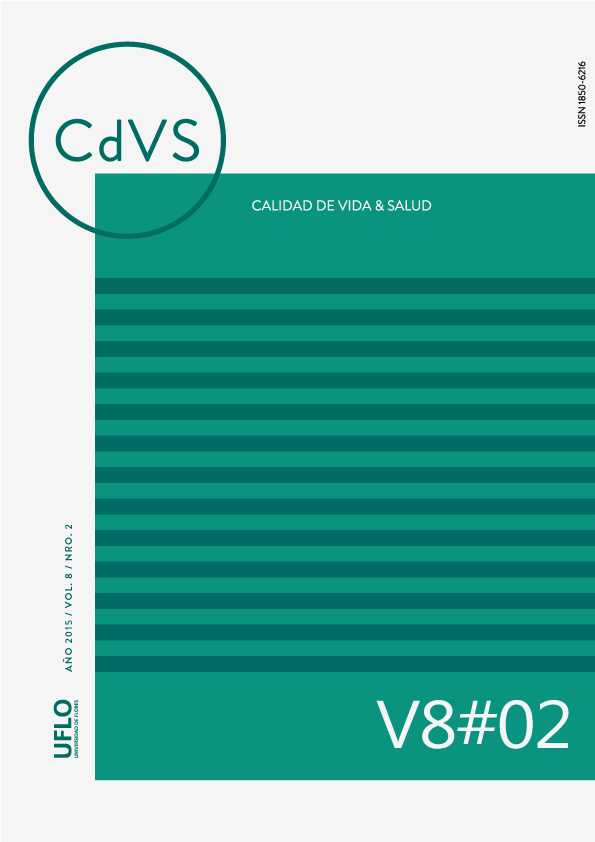Bullying e Inteligencia Emocional en niños
Keywords:
Inteligencia Emocional, Bullying, Cyberbullying, Violencia Escolar, Acoso EscolarAbstract
Bullying is defined as "an ongoing and deliberate verbal abuse and modal phenomenon, which receives a child by another or others; who they behave cruelly with him in order to subdue him, threaten and undermine the dignity of the child" (Cisneros VII, 2005, p.3). Meanwhile, Emotional Intelligence is understood as the ability to recognize the feelings and properly handle, and is considered essential to live positive and mature relationships. The latter construct can help eradicate the phenomenon of Bullying in schools, which represents a breakthrough in research. In this sense, the objective pursued in this study is twofold: first analyze the levels of Emotional Intelligence and Bullying in 25 students 4th year of primary education and on the other hand, to observe the relationship between both constructs. In general, are observed low levels of Bullying in its different manifestations, as well as of cyberbullying; equally the Emotional Intelligence seems to be appropriate. Finally, it seems to exist a significant, positive and moderated relation between the attention to the emotions and Bullying in its different manifestations.
References
A Bar-On, R. (1997). The Emotional Intelligence Inventory (EQ-i): Technical manual. Multi-Health Systems Publishers. Toronto, Canada.
Bar-On, R. (2000). Emotional and social intelligence: Insights from the emotional quotient inventory. En R. Bar-On y J.D.A. Parker (eds.), Handbook of Emotional Intelligence. San Francisco: Jossey- Bass
Bar-On, R. (2006). The Bar-On Model of Emotional-Social Intelligence (ESI). Psicothema, 18, 13-25.
Berrocal, P. & Pacheco, N. (2005). La Inteligencia Emocional y la educación de las emociones desde el Modelo de Mayer y Salovey. Revista interuniversitaria de formación del profesorado, (54), 63-94.
Bisquerra, R. (2011). Educación emocional. Propuestas para educadores y familias. Bilbao: Desclée de Brower.
Bisquerra, R. (2012). Diversidad y escuela inclusiva desde la educación emocional. Diversidad, calidad y equidad educativas, 1-23.
Buelga, S., Cava, M.J. y Musitu, G. (2012). Validación de la Escala de Victimización entre Adolescentes a través del Teléfono Móvil y de Internet. Pan American Journal of Public Health, 32(1), 36–42.
Buelga, S., Iranzo, B., Ortega, J., Torralba, E. y Micó, P. (2013). Relations between cyberBullying and antisocial behaviours in-and out- of- school context. First International Congress Students´ Engagement in School: International Perspectives of Psychology and Education. Lisbon: Portugal.
Caballo, V. E. (2008). Manual para el tratamiento cognitivo-conductual. España: SXXI.
Caro, I. (1997). Manual de psicoterapia cognitiva. España: Paidós.
Dayton, T. (2009). Equilibrio emocional. España: Kier
De Luca, S. (2000). El docente y las inteligencias múltiples. Revista Iberoamericana de la educación, 11.
Defensor del pueblo- UNICEF, (2007). Violencia escolar: el maltrato entre iguales en la educación secundaría obligatoria. 1999-2006. Madrid: publicaciones de la oficina del defensor del pueblo.
Del Rey, R., & Ortega, R. (2008). Bullying en los países pobres: prevalencia y coexistencia con otras formas de violencia. International Journal of Psychology and psychological therapy, 8(1), 39-50.
Díaz-Atienza, F., Prados Cuesta, M., & Ruiz-Veguilla, M. (2004). Relación entre las conductas de intimidación, depresión e ideación suicida en adolescentes: resultados preliminares. Revista de Psiquiatría y Psicología del Niño y del Adolescente, 4(1), 10-19.
Díaz-Loving, R. (2002). Psicología social. México: Pearson Educación.
Elipe, P., Ortega, R., Hunter, S. C., & Del Rey, R. (2012). Inteligencia Emocional Percibida e Implicación en Diversos Tipos de Acoso Escolar (Perceived Emotional Intelligence and Involvement in Several Kinds of School Bullying). Conductual Behaviour Psychology, 20, 169-181.
Extremera, N., & Fernández-Berrocal, P. (2002). Cuestionario MSCEIT (versión española 2.0) de Mayer, Salovey y Caruso. Multi-Health Systems Publishers. Toronto, Canada.
Fernández, I. (1998). Prevención de la violencia y resolución de conflictos. Madrid: Narcea.
Fernandez-Berrocal, P., Extremera, N., & Ramos, N. (2004). Validity and reliability of the spanish modified version of the Trait Meta-Mood Scale 1, 2. Psychological reports, 94(3), pp. 751-755.
Fernández, P., & Extremera, N. (2005). La inteligencia emocional y la educación de las emociones desde el modelo de Mayer y Salovey. Revista Interuniversitaria de Formación del Profesorado, 19(3).
Garaigordobil, M., & De Galdeano, P. G. (2006). Empatía en niños de 10 a 12 años. Psicothema, 18(2), 180-186.
Garaigordobil, M., & Oñederra, J. A. (2010). Inteligencia emocional en las víctimas de acoso escolar y en los agresores. European Journal of Education and Psychology, 3(2).
Garaigordobil, M. (2011). Prevalencia y consecuencias del cyberBullying: una revisión. International Journal of Psychology and Psychological Therapy, 11(2), 233- 254.
Garaigordobil, M. (2013). CyberBullying. Screening de acoso entre iguales. Madrid: TEA.
Gardner, H. (1994). Multiples Intelligences. New York: BasicBooks. Traduc. Española en Ed. Paidós.
Goleman, D. (1995). La inteligencia emocional. España: Zeta.
Goleman, D. (1996). La inteligencia emocional. Barcelona: Keirós.
Goleman, D. (1998). La práctica de la inteligencia emocional. Barcelona: Keirós.
Goleman, D., Boyatzis, R., & McKee, A. (2002). El líder resonante crea más. Plaza & Janés.
Goleman, D. (2012). Inteligencia emocional. Editorial Kairós.
Güell, M., & Muñoz, J., (1998). Desconeix-te tu mateix, Edicions 62, Barcelona, (Traducción castellana: Desconócete tu mismo, Barcelona: Paidós.
Harris, S. & Petrie, G. (2006). El acoso en la escuela: los agresores, las víctimas y los espectadores. Barcelona: Paidós.
León, B. (2009). Salud mental en las aulas. Revista de Estudios de Juventud, 84, 66-83.
Linares, J., Díaz, A., Fuentes, M., Padilla, D., & Cano, A. (2007). Percepción de la violencia escolar por parte de los familiares: un estudio comparativo en cuatro países europeos. International Journal of Clinical and Health Psychology, 7(1), pp. 93-104.
Lopes, P., Salovey, P. & Straus, R. (2003). Emotional intelligence, personality and the perceived quality of social relationships. Personality and Individual Differences, 35(3), 641-658.
Mayer, J., Salovey, P. & Caruso, D. (2000). “Models of emotional intelligence”. En R. J. Stemberg (Ed.), Handbook of Intelligence (2nd ed.). New York: Cambridge
Mooij, T. (1997). Por la seguridad en la escuela. Revista de Educación, 313, 29-52.
Moylan, C. (2010). The Effects of Child Abuse and Exposure to Domestic Violence on Adolescent Internalizing and Externalizing behavior Problems. Journal of family Violence, 25(1), 53-63.
Olweus, D. (1998). Conductas de acoso y amenaza entre escolares. Madrid: Ediciones Morata.
Orte, C. & Ballester, L. (2007). Prevención del comportamiento delictivo en la comunidad. Intervención Psicosocial, 16(2), 269-281.
Ortega, R. (1994). Violencia interpersonal en los centros educativos de enseñanza secundaria. Un estudio sobre maltrato e intimidación entre compañeros. Revista de Educación, 304, 253-280.
Ortega, R. & Mora-Merchán, J. (1997). Agresividad y violencia. El problema de la victimización entre escolares. Revista de Educación, 313, 7-28.
Pacheco, N. & Berrocal, P. (2004). Inteligencia emocional, calidad de las relaciones interpersonales y empatía en estudiantes universitarios. Emotional intelligence, quality of interpersonal relationships and empathy in. Clínica y salud, 15(2), 117-137.
Real Academia Española. (2014). Diccionario de la lengua española. Madrid, España.
Salmivalli, C. (2007). Reactive but not proactive aggression predicts victimization. Developmental Psychology, 43, 869-900.
Salovey, P. & Mayer, J. (1990). Emotional Intelligence. Imagination, Cognition, and Personality, 9, 185- 211.
Savater, F. (1997). El valor de educar. Barcelona: Ariel.
Serrano, Á. (2006). Acoso y violencia en la escuela: cómo detectar, prevenir y resolver el bullying. Ariel.
Smith, P., Mahdavi, J., Carvalho, M. & Tippett, N. (2006). An investigation into cyberbullying, its forms, awareness and impact, and the relationship between age and gender in cyberBullying. Research Brief No. RBX03-06. London: DfES.
Teruel, J. (2007). Estrategias para prevenir el Bullying en las aulas. Madrid: Ojos Solares.
Published
How to Cite
Issue
Section
The authors who publish in this journal accept the following conditions:
1. The authors retain the copyright and assign to the journal the right to first publication, with the work registered under the Creative Commons Attribution license, which allows third parties to use what has been published as long as they mention the authorship of the work and the first publication in this journal.
2. Authors may make other independent and additional contractual agreements for non-exclusive distribution of the version of the article published in this journal (e.g., inclusion in an institutional repository or publication in a book) provided that they clearly indicate that the work was first published in this journal.
3. Authors are permitted and encouraged to publish their work on the Internet (e.g., on institutional or personal pages) before and during the review and publication process, as this may lead to productive exchanges and greater and faster dissemination of published work (see The Effect of Open Access).









